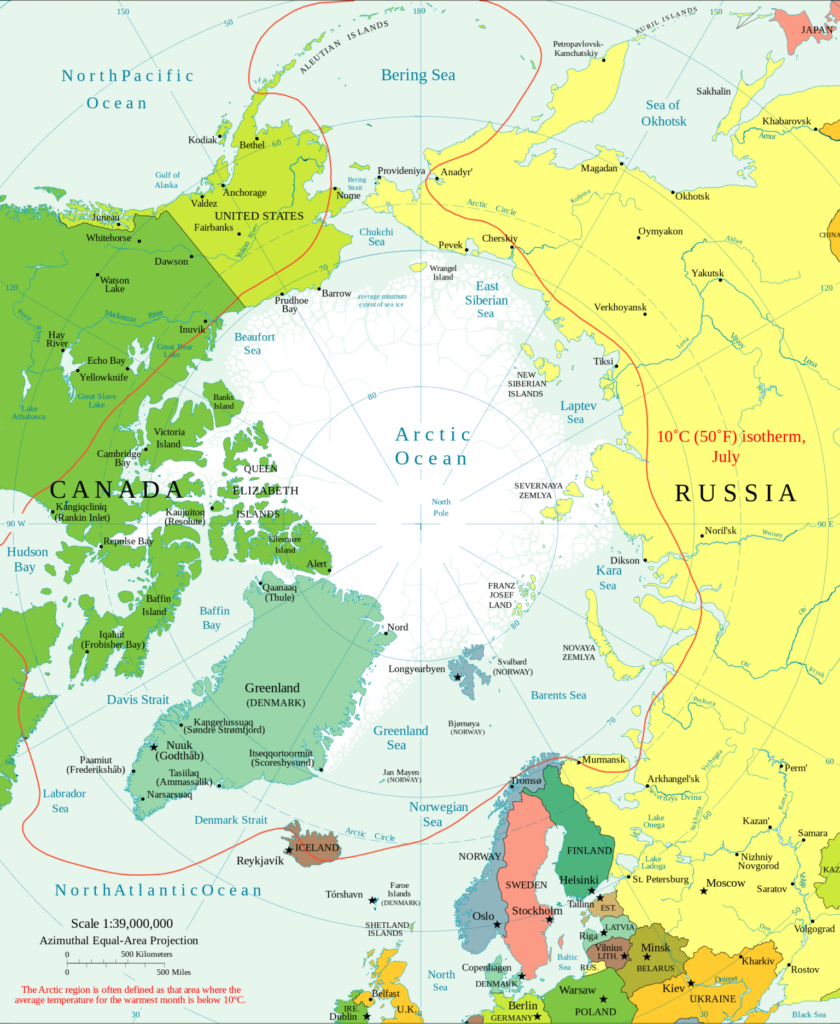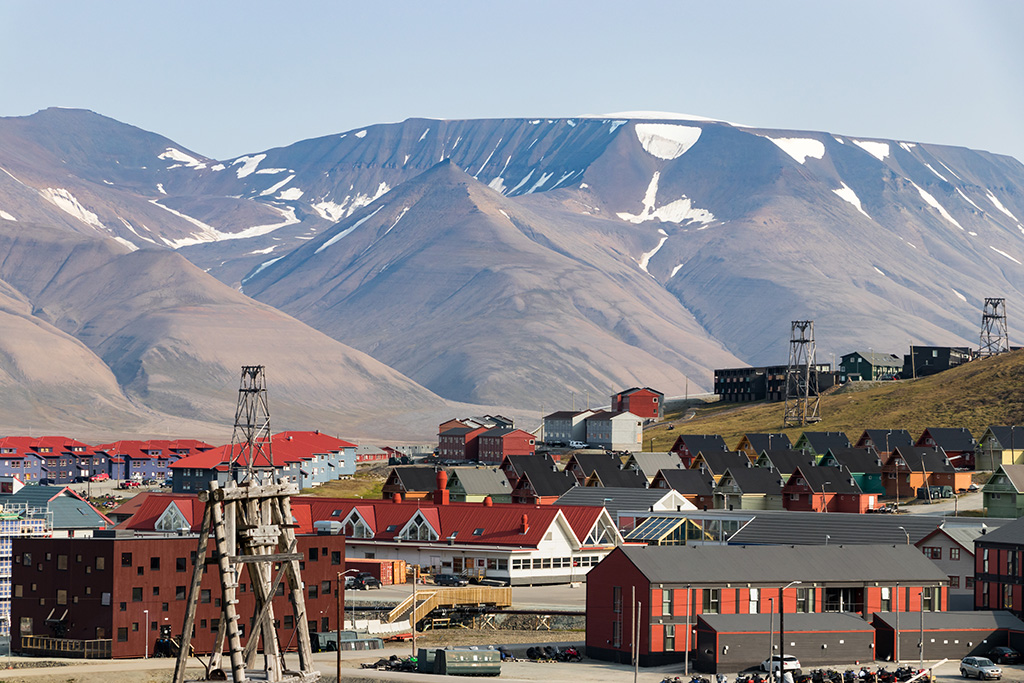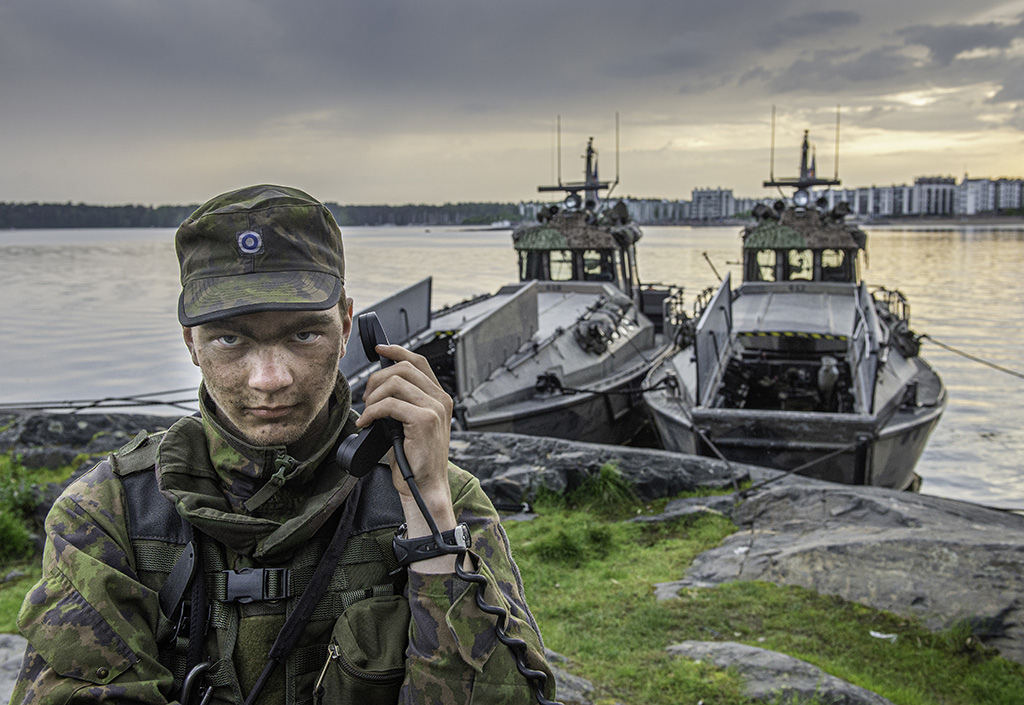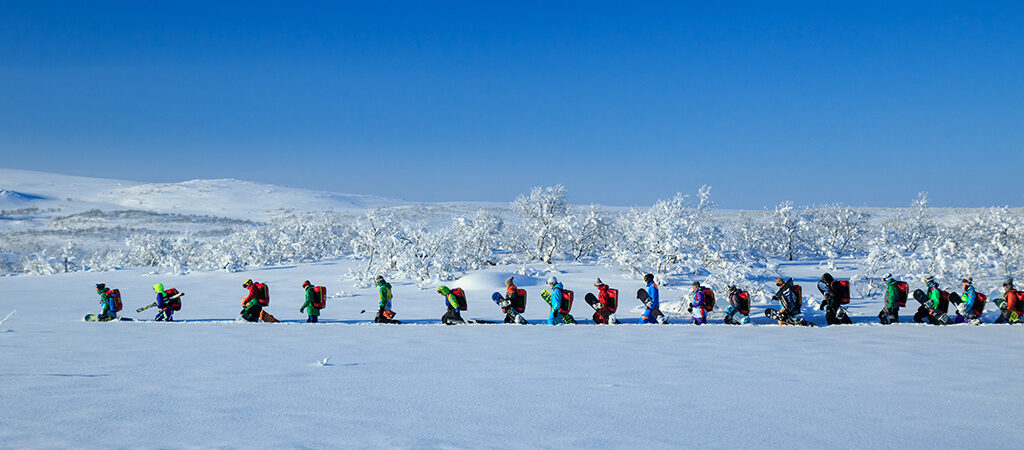The battle for the Arctic
 First published as a Long Read in spiked, December 2023
First published as a Long Read in spiked, December 2023Russia, China and the West are scrambling for control over the frozen tundra
The Arctic Circle runs for nearly 10,000 miles. Inside it, just four million people live on this vast, desolate expanse of land, sea and ice. Comprising four per cent of the Earth’s surface, the Arctic is fiercely inhospitable and mostly still untouched.
Much of the Arctic consists of the northern reaches of eight sovereign states. Norway borders Russia in the Arctic, but only at its easternmost tip in the north. Finland has a much longer, 830-mile border with Russia, the northern part of which lies inside the Arctic Circle. Russia itself boasts half of the Arctic Ocean’s coastline and half of the Arctic’s population. Then there is Sweden, Denmark (which owns Greenland), Iceland, Canada and the US, whose Alaskan territory is separated from Russia by the 55-mile-wide Bering Strait.
In the West, many have long regarded the Arctic as an unsullied jewel of the Earth. More recently, Western elites have tended to talk about the Arctic almost entirely in terms of climate change. It is presented as a beleaguered refuge for species under threat, from polar bears to walruses to grey whales. Some now believe that climate change is about to doom the Arctic ice itself to extinction.
As a result of this narrow environmentalist view of the Arctic, many Westerners are missing the main event: a spreading series of stand-offs – exacerbated by Vladimir Putin’s invasion of Ukraine – between Russia and its seven Arctic neighbours.
A potential war zone
The Arctic has long been a potential arena for war, especially nuclear war. American and Russian submarines stationed there boast intercontinental ballistic missiles and act as strategic nuclear deterrents. For Moscow, the Kola Peninsula in Russia’s far north-west forms a gateway for vessels from its massive fleet of mainly nuclear-powered submarines. Through the so-called GIUK gap, the gap between Greenland, Iceland and the UK, Russia’s subs can reach the Atlantic.

A map of the Arctic (Credit: CIA, Public domain, via Wikimedia Commons).
Should the Kremlin ever fire cruise missiles toward North America, they would fly over the Arctic. Likewise, Canada and America’s warning system, stretching from Alaska to Newfoundland and Labrador, would pick up the attack in the Arctic. And, partly to atone for missing the Chinese surveillance balloon that reached Alaska in January this year, America and Canada are set to build new Arctic-scanning radar bases in the north-western US and Ontario. The main aim of which will be to detect the new hypersonic cruise missiles that Russia has already used in Ukraine and could one day fire at Canada and America, via the North Pole.
The Arctic is also the site of potential non-nuclear disputes between Russia and NATO members. The Kremlin’s feared 200th Motor Rifle Brigade is located only a few kilometres from Russia’s short border with Norway and its much longer one with Finland. Other Russian marines are also based in the region, including the spetsnaz (special forces). Both units have suffered severe losses in Ukraine, but their location and their likely future revival continue to worry Norway. After all, over in Ukraine, at least seven soldiers from the 200th Motor Rifle Brigade are wanted for war crimes.
There have already been potential flashpoints. When Moscow invaded Ukraine, Norway blocked Russian exports to Svalbard, a Norwegian Arctic archipelago with a population of just 2,600 – including 400 Russians. That led Russia to threaten unspecified ‘retaliatory measures’. Since then, Russo-Norwegian relations have deteriorated still further. Indeed, northern Norway, home to nearly 500,000 people and a significant Russian-speaking minority, is reportedly now a hotbed of Russian espionage. The presence of Russian drones and spies, surveilling key Norwegian ports, as well as fibre-optic cables and pipelines, indicates that the Kremlin is already waging low-level hybrid warfare.
New NATO member Finland also has problems with Russia that stretch into the Arctic. In November, Finland claimed that Moscow was using asylum seekers from the Middle East and Africa to infiltrate its borders. It promptly diverted them all to the remote Raja-Jooseppi border post, 300 kilometres north of the Arctic Circle. Finland has since announced that it will shut down all border crossings with Russia.
The role of China in the Arctic Circle is also increasing tensions. Chinese investments and technologies underpin Russian fossil-fuel extraction and transport in the Arctic. And, although China has no land or sea claims on the Arctic, it declared itself a ‘Near-Arctic State’ in 2018, invoking the impact of changes in the Arctic’s ecology on China’s own ecology.
The Arctic is not just some frozen, neglected backwater. Everybody wants in. And with that comes the risk of further state-to-state disputes and conflict.
From cooperation to antagonism
The Arctic hasn’t always been a site of international tension. After the Cold War, inter-state relations were carried out in a spirit of compromise. In 1996, the eight Arctic nation states formed the Arctic Council, which was explicitly designed to promote cooperation between the states involved, and also included representatives from the Arctic’s indigenous peoples.
In 2007, a Russian sub planted Russia’s national flag on the seabed beneath the North Pole, but it did so mostly as a joke. As late as December 2014, the Financial Times felt that competing claims over the Arctic had been conducted ‘in a relatively benign and co-operative spirit’, even if Putin was becoming more aggressive.
International relations have since rapidly deteriorated. In February and March of 2014, Russia annexed Crimea. And in April of that year, Putin announced that Russia was to step up its presence in the Arctic. As Reuters reported at the time, Russia had ‘staked its future economic growth on developing the Arctic’s vast energy resources and reviving a Soviet-era shipping route through the ice’. That same month, Russia’s state-owned oil and gas company, Gazprom, began the first ever shipment to Europe of oil from offshore Arctic waters.
The old days of cooperation among the eight Arctic nations were certainly numbered after Russia’s annexation of Crimea in 2014. But they only finished decisively with Russia’s full-scale invasion of Ukraine in 2022. The Arctic Council suspended its operations that year, and since then there has been a step-change in the US’s approach.

In September 2022, the Biden administration established a new Arctic Strategy and Global Resilience Office. Early next year, the US defence department will publish its first strategy for the Arctic since 2019. Referring to more military activity in the region by Russia and China, the Arctic Office’s Iris Ferguson said:
‘We see increasing alignment between them – particularly off the coast of Alaska. There is no decline in activity in the Russian Arctic despite the war in Ukraine. This says something about the significance of the region.’
The US, however, is struggling to keep up with its competitors in the Arctic. In May this year, a top US Air Force general, Glen D VanHerck, told the Senate Armed Services Subcommittee on Strategic Forces that the greatest risk for the US stemmed ‘from our inability to change at the pace required by the changing strategic environment… In an era of incredible innovation and technological achievement, inflexible, outdated processes are a greater impediment to success than many of our competitors’ advancements.’ The slow reflexes of the US are as evident in the Arctic in 2023 as they were during its botched withdrawal from Afghanistan in 2021.
The melting Arctic?
While international competition and potential conflict has been rapidly escalating in the Arctic, Western political and cultural elites have continued to understand the Arctic principally as a site of ‘environmental catastrophe’. Indeed, footage of Arctic ice breaking up has become a hackneyed metaphor for runaway climate change.
In October, COP28 president Dr Sultan Al Jaber warned that Arctic temperatures were rising about four times faster than the rest of the planet (though the previously accepted figure was twice as fast). Later on, at a summit of heads of state and scientists in Paris, French president Emmanuel Macron said he would spend €1 billion on research into the melting of the Arctic and the Antarctic. At the summit, Pam Pearson, founder and director of the International Cryosphere Climate Initiative (ICCI), said that ‘politicians think that the ice is far away. The ice does not care. It will continue melting until carbon dioxide levels stop rising and come down.’
Western environmentalists seem to care far more about the Arctic ice than they do about the people that live on it. On top of the eight nation states that own bits of the Arctic, it is also home to several indigenous peoples, including: the Sámi of Scandinavia and the Kola Peninsula; the Greenland Inuit; First Nation peoples in Canada and Alaska; and Russian Arctic communities, such as the Chukchi and Evenk.
You will barely find mention of indigenous peoples’ actual interests in environmentalist reports on the Arctic. In one published in November, the ICCI instead concentrated on ramping up the alarm over climate change. It claimed that the Arctic Ocean will soon be free of sea ice almost every summer for up to four months (July-October). In turn, said the ICCI, open water in the Arctic will absorb more heat from polar sunlight, accelerate the melting of the Greenland Ice Sheet and irreversibly increase the thaw of coastal permafrost, whose peatlands are close to or have already passed a ‘tipping point’.
Tipping points, irreversible changes… Even if some of the scenarios mooted come true, the answer to climate change in the Arctic, the answer that will help the people who live there, is more economic development. This is what ultimately will fortify them against the whims of nature. Moreover, the climate-change alarmism of Western elites obscures the fact that the threat posed by war around the Arctic is much higher, more lethal and more immediate than the threat posed by climate change.
The new world map
The melting of the Arctic may not pose the environmental threat the Western doom-mongers claim, but it could exacerbate the threat of war. By destabilising trade, transport and general infrastructure, a slow thawing of the Arctic ice could make international relations still more fraught. Not least because Russia and China look set to take advantage.
A more liquid, less icy Arctic would certainly be in Russia’s interests. It would help ice-strengthened Russian tankers ship Liquefied Natural Gas from vast fields in Yamal, northern Siberia, to European and Asian destinations. Moscow said in 2022 that it would spend almost $30 billion by 2035 on developing its Northern Sea Route (NSR). This runs across the top of Russia from Murmansk to the Bering Strait and Alaska, and it has become more viable as sea ice in the Arctic has declined.
Indeed, at a conference of BRICS nations in August this year, Putin announced that Russia is planning to build new ports, fuel terminals and icebreaker ships in the Arctic. The following month, Russia dispatched the first-ever conventional oil tanker along the NSR, with a cargo of a million tonnes of crude oil destined for Ningbo, China. Now, after the 7 October attack by Hamas on Israel, China and others might well prefer the fast, cheap, 8,000-mile passage of fossil fuels going from Rotterdam to Asia via the NSR over the increasingly dangerous 13,000-mile route via the Suez Canal, Yemen and the Straits of Malacca.

China will certainly benefit from more maritime routes produced by Arctic melting, given that about 90 per cent of Chinese exports go by sea. And Russia, which is exporting a lot of energy and raw materials to China, would also clearly benefit. In October, Putin told Chinese president Xi Jinping that Russia plans to run ‘ice-class’ cargo ships, which have thicker hulls than conventional ships, throughout the NSR all year round. This is not unfeasible, even though a maritime breakthrough in the Arctic won’t be easy.
A green goldmine?
While there might be a maritime interest in a melting Arctic, that alone doesn’t explain why so many different nations are now competing over this frozen wasteland. In Imperialism (1902), the economist JA Hobson wrote an early and influential account of what he called the ‘economic taproot’ of imperial conquest. He argued that its three wellsprings are nations’ search for markets, labour and raw materials.
These look weak as explanations for what is going on in the Arctic today. The Arctic’s demand for externally supplied construction equipment, infrastructure and housing is limited and its own market for fish, ice and tourism is modest. It also offers relatively few workers for foreign investors to exploit.
So that would seem to leave only raw materials as the real target for international interest in the Arctic. It is estimated that 30 per cent of the world’s undiscovered gas and 13 per cent of its undiscovered oil lie in the Arctic. After the invasion of Ukraine, Western extractors such as ExxonMobil, Shell and BP pulled out, opening the door for Russian and Chinese operations to expand.
Furthermore, there is growing interest in the Arctic’s minerals, especially as more melting in the region may one day make them easier to access. Some even argue that minerals are ‘the main drivers of the Arctic resource rush’ – especially the rare-earth metals, neodymium, praseodymium, terbium and dysprosium. These are held to be ‘key to the world’s electric-vehicle and renewable-energy revolutions’. There are also deposits of copper, which is vital to electricity grids, wind turbines and photovoltaic systems. The Arctic could then be of special interest to nations determined to dominate the green economy.
But this may be overstating it. The Arctic’s resources are hard to get at. As one review of critical minerals in the Arctic explains, the high transportation and energy costs involved are a significant economic barrier to development in the Arctic. And it is by no means guaranteed that worldwide demand for Arctic minerals will remain high. If interest in the so-called green-energy transition wanes, then demand for those minerals will fall.
The Arctic is neither a fossil-fuel paradise nor a green goldmine. It is best understood as a gladiatorial arena in which nations are battling it out for regional domination.
The potential for conflict
Growing geopolitical volatility is intensifying international competition over the Arctic. Wars rage in Ukraine and Gaza and tensions simmer in the South China Sea and the East China Sea. In a little-noticed development in September, Taiwan denounced new plans by Beijing to build a high-speed rail link from the province of Fujian, in China’s south-east, to two groups of Taiwanese islands located right by the Chinese coast. More recently, Chinese coastguard vessels have again fired a water cannon at Filipino boats in the South China Sea, first around the Scarborough Shoal and then around the Spratly Islands.
These kinds of skirmishes in the maritime Far East are spreading to the maritime Far North. A full-scale Arctic war is not imminent, but the clouds are certainly darkening and serious confrontations are possible. As two Russian authors observed in 2022, Russia, Denmark and Canada all have claims lodged with the United Nations over ownership of the Lomonosov Ridge, near the Geographic North Pole.
As with the South and East China Seas, disputes in the Arctic are more about power projection than what lies beneath the ground. For example, Moscow knows that if and when Turkey allows Sweden to join Finland in entering NATO, Russia will be the only Arctic state not to be a NATO member. Indeed, the Kremlin has moved to restructure Russia’s military posture so that it can fight full-scale land operations all the way down from Arctic Finland to Estonia, Latvia and Lithuania. In June, the Kremlin announced the reactivation of the Leningrad Military District, centred around St Petersburg, to put the Russian military on a long-term war footing against the West and Ukraine.
Over the next decade, the Arctic looks like it will be disturbed much more by military encounters and provocations than by drilling or climate change. The battle for the Arctic is just beginning.
Photo: File ID 136053039 | © Yana Mavlyutova | Dreamstime.com
@jameswoudhuysen I use my bicycle every day. Exercise and access to shopping without any parking meters and all that fuzz. But alfa-cyclists are the worst. They are competing at 40 mph and always acting rudely to get where they are going.
A PRO-CAR CYCLIST WRITES: 12-1pm tomorrow on #R4, will be talking bikes, cars, pedestrians, public transport – and #JeremyVine
Stimulating piece on the #CrisisOfCustomerService by clever @ClaerB @FT.
All that Clinton-era #CustomerExperience guff was always for the birds - certainly compared with, er, price.
The new thang? Often there is NO service - and thus no #CX!
Articles grouped by Tag
Bookmarks
Innovators I like

Robert Furchgott – discovered that nitric oxide transmits signals within the human body

Barry Marshall – showed that the bacterium Helicobacter pylori is the cause of most peptic ulcers, reversing decades of medical doctrine holding that ulcers were caused by stress, spicy foods, and too much acid

N Joseph Woodland – co-inventor of the barcode

Jocelyn Bell Burnell – she discovered the first radio pulsars

John Tyndall – the man who worked out why the sky was blue

Rosalind Franklin co-discovered the structure of DNA, with Crick and Watson

Rosalyn Sussman Yallow – development of radioimmunoassay (RIA), a method of quantifying minute amounts of biological substances in the body

Jonas Salk – discovery and development of the first successful polio vaccine

John Waterlow – discovered that lack of body potassium causes altitude sickness. First experiment: on himself

Werner Forssmann – the first man to insert a catheter into a human heart: his own

Bruce Bayer – scientist with Kodak whose invention of a colour filter array enabled digital imaging sensors to capture colour

Yuri Gagarin – first man in space. My piece of fandom: http://www.spiked-online.com/newsite/article/10421

Sir Godfrey Hounsfield – inventor, with Robert Ledley, of the CAT scanner

Martin Cooper – inventor of the mobile phone

George Devol – 'father of robotics’ who helped to revolutionise carmaking

Eugene Polley – TV remote controls

Thomas Tuohy – Windscale manager who doused the flames of the 1957 fire



0 comments